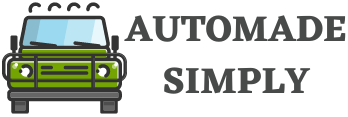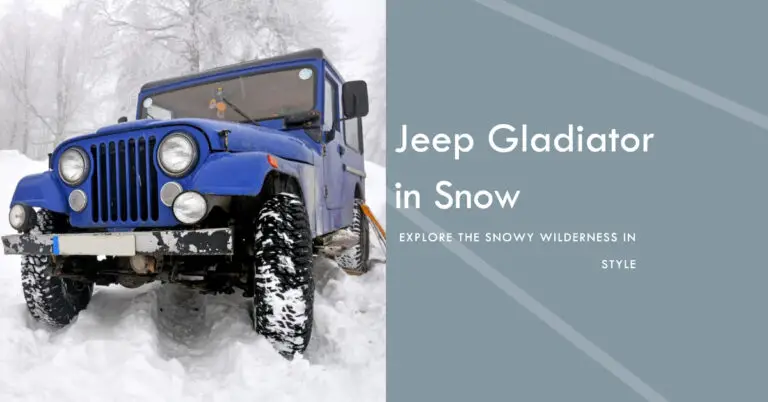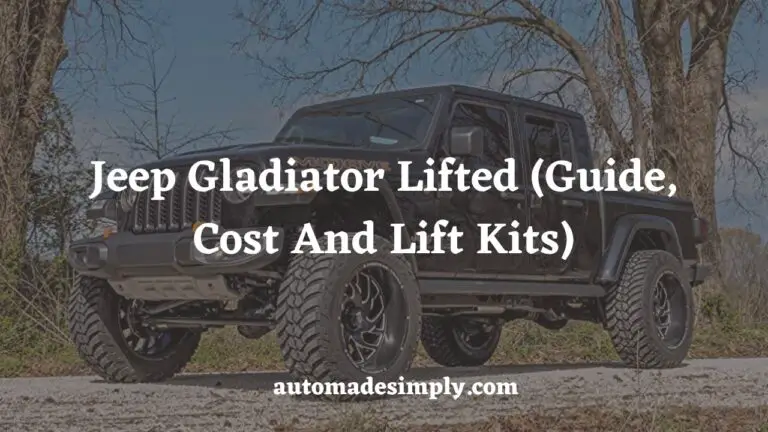Can You Paint A Jeep Hardtop? Tips and Tricks

Customizing your Jeep Wrangler is one of the best parts about owning this iconic 4×4. From lift kits to bumpers and everything in between, the possibilities are endless when it comes to modding your Wrangler. One popular customization is to paint your factory Jeep hardtop a custom color to match your Jeep or give it a unique look. But many Wrangler owners wonder: can you paint a Jeep hardtop yourself to get an evenly coated, professional looking finish?
The answer is yes, you absolutely can paint your Jeep hardtop on your own! With the right materials, proper preparation, and careful application, painters of all skill levels can achieve excellent results. This comprehensive guide covers everything you need to know about prepping, painting, and caring for a custom painted Jeep hardtop.
We’ll provide tips and tricks for choosing the right paint, achieving proper adhesion, avoiding common mistakes, and getting a flawless, durable finish. Whether you want to match your Jeep’s body color or give your Wrangler a complete one-of-a-kind color makeover, read on to learn how to paint a Jeep hardtop like a pro.
Table of Contents
What Type of Paint is Best For a Jeep Hardtop?
When taking on a Jeep hardtop painting project, the first decision is choosing what type of paint to use. There are a few good options that each have their own pros and cons:
Enamel Paint
Enamel paints provide a durable, glossy finish and are resistant to scratches, chips, and fading. This makes them one of the best choices for painting a removable Jeep hardtop that will be exposed to the elements. Enamel paints come in many color options and can be purchased in spray cans for convenience. Just be sure to choose a paint formulated for use on plastics.
Pros:
- Extremely durable finish
- Resists scratches, fading, and chips
- High gloss finish
- Wide range of color options
Cons:
- Typically more expensive
- Long cure time – up to a few weeks
Acrylic Lacquer
Acrylic lacquers produce a smooth, durable finish that resists yellowing and cracking over time. Lacquer paints are fast-drying, making them easy to apply in multiple coats. Just be cautious of drips when spraying. There are less color options than enamels, but common Jeep colors are readily available.
Pros:
- Durable, smooth finish
- Resists yellowing and cracking
- Fast drying time
- Easy to spray and layer coats
Cons:
- Less color selection
- Risk of drips since it dries quickly
- Fumes require proper ventilation
Urethane Paint
Urethane paints are commonly used on auto finishes, making them an ideal choice for painting your Jeep hardtop. Like lacquers, they dry quickly but are highly durable. Urethanes are easy to apply and produce an ultra smooth finish. Mixing your own custom color is also easy with urethane paints.
Pros:
- Very durable, scratch resistant finish
- Ultra smooth, show quality appearance
- Fast drying time
- Easy to mix custom colors
Cons:
- Requires skill to spray properly
- Expensive compared to other options
- Strong fumes require ventilation
Bedliner Paint
For the ultimate rugged finish, consider truck bedliner paint. This textured protective coating provides scratch defense and hides imperfections. Great for off-road enthusiasts! Just know it lacks the smooth, glossy finish of traditional paints.
Pros:
- Super durable textured finish
- Hides scratches and imperfections
- Easy to apply with rollers or spray cans
Cons:
- Lacks smooth, glossy appearance
- Limited color selection
- Not ideal for color matching your Jeep
Proper Surface Prep – The Key to Great Paint Adhesion
However you decide to paint your Jeep hardtop, properly preparing the surface is crucial for the paint to adhere correctly. Your factory hardtop has a slick plastic surface that paint struggles to bond to. That’s why it’s critical to take time on the prep work to ensure success.
Here is an overview of the key steps when prepping a Jeep hardtop for paint:
1. Wash and Degrease the Surface
The first step is to thoroughly clean the hardtop’s surface using soap and water, or a degreasing cleaner like Simple Green if needed. This removes any dirt, oil, grease, or contaminants that could interfere with proper paint adhesion.
Be sure to rinse well and let the surface fully dry before moving to the next steps.
2. Lightly Scuff Sand the Plastic
After washing, you need to lightly scuff up the factory plastic surface. This allows the paint to mechanically adhere to the rough surface rather than just sit on top of the slick plastic.
Wet sanding with 400 grit sandpaper is recommended to provide enough tooth for paint adhesion without digging too deep into the plastic. Sand in straight lines across the entire hardtop surface.
3. Sand Edges and Trim Areas
Pay special attention to sanding any trim areas, ridges, and edges around window openings. These areas are especially slick and prone to paint chipping or peeling later if not properly sanded.
You can use 400 grit paper on edges and trim sections since they don’t need as fine of sanding. Take care around any panel lines to avoid removing them.
4. Finish Sanding with Finer Grit
After doing a thorough 400 grit scuff sanding, go back over the entire hardtop with a finer 600-800 grit sandpaper. This smooths everything out and prepares the surface for a flawless painted finish. The finer grit removes any deeper scratches or roughness from the first sanding pass.
5. Clean and Tack Off the Surface
Once sanding is complete, thoroughly dry and clean the hardtop again. Make sure to remove any dust or residue from sanding using a lint-free rag and tack cloth.
The surface needs to be absolutely clean before applying primer and paint for proper adhesion.
Priming Your Hardtop for Correct Paint Prep
While some DIY painters skip priming plastic hardtops, it’s highly recommended to use a plastic adhesion promoting primer before painting. Priming a Jeep hardtop provides important benefits:
- Enhances Paint Adhesion – Primer chemically etches into the sanded plastic surface to provide a strong gripping layer for paint. This prevents chipping or peeling later on.
- Prevents Imperfections – Applying primer helps fill in any small imperfections in the plastic surface to achieve a smoother finish.
- Rust Prevention – Self-etching primers contain rust inhibitors which help protect exterior plastic parts from corrosion.
- Promotes Uniform Absorption – Primed plastic absorbs paint more evenly, preventing blotchiness in the topcoat.
For best results, use a plastic primer specifically designed for bumpers, fenders, and unpainted exterior trim parts. Krylon Fusion and SEM Self Etch primers work very well for priming hard plastics like Jeep tops.
Spray apply 2-3 even mist coats of primer, allowing 10 minutes between coats to dry. Once fully cured, lightly sand any rough spots with 600 grit sandpaper and tack off before applying your paint.
Painting Process – Applying Color to Your Hardtop
Now comes the fun part – actually spraying color onto your Jeep hardtop!
To achieve an flawless, professional paint job, follow these key tips when applying your paint:
Spray in Light, Even Coats
The number one rule of properly painting a hardtop is to spray multiple light “mist” coats rather than trying to cover with thick, wet coats. Light passes allow the paint to flow out smoothly without sagging or running.
Wait at least 10 minutes between coats for the paint to become tacky before applying the next pass. 5-6 light coats are recommended for good coverage and an even finish.
Maintain Proper Spraying Distance
Hold the paint spray can 6-8 inches away from the surface when spraying. Get too close and you’ll have drips. Too far away results in a dusty finish. Maintain this ideal distance as you spray side to side.
Move the spray can at a consistent pace – avoid stopping during passes. Keep the can perpendicular to the surface.
Start With the Edges and Work Into the Center
When painting a full panel, first apply a couple coats just to the edges – top and sides. Then gradually work into the center with each pass. This prevents paint build up in the middle.
Overlap passes 50% to ensure complete, uniform coverage on the entire hardtop.
Pay Special Attention to Tricky Areas
Watch for paint build up in corners, crevices, or anywhere paint could pool and run. Focus on applying lighter coats in these areas.
Edges and the tops/bottoms of panels often need additional coats since paint tends to avoid wrapping into these areas.
Allow for Proper Curing Before Reassembly
It’s important to let your paint fully cure before reinstalling the hardtop. Drying times vary based on humidity, temperature, and type of paint.
Refer to the product specs for exact drying times. Typically enamels take 5-7 days, while urethanes and lacquers may only need 2-3 days. Insufficient curing can lead to tacky or softened paint which picks up defects.
Achieving a Flawless, Factory-Like Painted Finish
With careful prep and painting steps, you can achieve stunning results transforming the look of your Jeep with a custom painted hardtop. For that true flawless, factory finish, consider these extra paint detailing steps:
Color Sand to Create a Smooth Surface
After allowing for full paint curing time, you can wet sand the surface to get rid of any small imperfections. Use 1000 grit wet/dry automotive sandpaper and gently sand until smooth. Be sure to keep the surface wet while sanding to avoid scratches.
Rinse thoroughly and dry before applying polish or wax.
Polish and Compound for Added Shine
Using a high quality polish and finishing compound removes fine swirl marks and creates a crystal clear glossy finish. Apply by hand or with a low-speed buffer if you have one available.
This extra step really makes the paint “pop” with a liquid-like wet look.
Finish with a Clearcoat for Protection
Adding layers of a clearcoat finish provides UV protection to prevent fading and gives your paint extra gloss and durability. Use an automotive grade clearcoat designed for painted plastic exterior parts.
Multiple coats of clearcoat create added depth and clarity in the paintwork.
Avoiding Common Paint Problems on Jeep Hardtops
Painting a hardtop seems simple in theory, but there are a few typical problems that can arise if you don’t take care on the prep work and painting technique:
1. Cracking or Peeling Paint
This frustrating issue is almost always caused by lack of proper surface prep. If you don’t thoroughly scuff up the plastic surface for the paint to adhere to, it will soon start cracking and peeling. Always properly sand and use adhesion promoting primer.
2. Paint Chipping and Flaking
Chips and flakes in the paint job also come back to poor adhesion. Make sure to sand trim and edge areas smooth for uniform paint bonding. Inspect these vulnerable spots for any primer showing through before topcoating.
3. Blotchy, Inconsistent Color
Applying paint too thick or too close to the surface results in dark spots and an uneven finish. Lay down light mist coats to allow the paint to flow out evenly across the entire panel.
4. Runs and Sags
Common spraying mistakes like holding the can too close or applying too much paint in corners or crevices leads to ugly drips and runs in the finish. Go slowly and focus your technique to avoid this frustration.
5. Surface Imperfections
Dust, bugs, or other debris landing in the paint leaves unsightly bumps and marks in the finish. Carefully clean and tack the surface between coats and spray in a controlled area to prevent this.
Caring for Your Painted Jeep Hardtop
Once your custom paint job is complete, you’ll want to take proper steps to maintain that flawless finish for years to come:
- Wash regularly using automotive soap and water or non-abrasive cleaners to prevent buildup of dirt, salt, and grime that can damage the paint over time. Be sure to rinse thoroughly.
- Wax at least every six months using a high quality automotive wax. This protects the painted finish from UV rays and environmental contaminants.
- Inspect frequently for any stone chips or light scratches, especially on leading edges, and touch up as soon as possible to prevent corrosion. Carry your custom colored touch up paint for easy repairs.
- Avoid parking under trees or structures with dripping fluids that could stain or damage your beautiful new paint.
- Store your hardtop indoors or use a protective Jeep storage cover when not on your Wrangler. Prolonged sun exposure and weathering can dull the painted finish over time.
Properly caring for your painted Jeep hardtop helps maintain that factory fresh, custom look for years of enjoyment.
Frequently Asked Questions
What type of paint is best for painting a Jeep hardtop?
Enamel and urethane paints provide the most durable, long lasting finish on a Jeep hardtop due to their scratch resistance and protection from fading.
Can I use spray cans or do I need an automotive paint spray gun?
Quality enamel or urethane paint in aerosol spray cans works extremely well for DIY top painting. Just be sure to use compatible primer and clearcoat.
Do I need to remove the hardtop to paint it?
It’s recommended to remove the top for best access, but you can paint it while mounted by masking off windows and body panels. Allow extra dry time if painting in place.
How long does it take for paint to fully cure?
Curing times vary based on paint chemistry and weather conditions. Most enamels take 5-7 days to fully harden. Urethanes and lacquers may only need 2-3 days before reinstalling.
What grit sandpaper should be used to prep the hardtop?
Start with 400 grit to scuff the surface, then finish sanding with 600-800 grit for a smooth foundation before priming and painting.
Can I paint over a factory textured hardtop?
Yes, but you’ll need to apply body filler primer to fill the textured areas or it will show through the paint. Get the surface as smooth as possible before painting.
Conclusion
Painting your Jeep Wrangler’s factory hardtop is a great way to customize your 4×4 while also adding protection. With proper preparation and technique, DIY painters can achieve stunning professional quality results. The keys are proper sanding for adhesion, light coats of paint, and clearcoat finishing.
Use the tips and tricks in this complete painting guide to prep your hardtop surface, spray high quality automotive paint and protective clearcoat, then maintain the finish for years of enjoyment. Driving your Jeep topless in nice weather and knowing you have a customized painted hardtop for winter months is the best of both worlds







